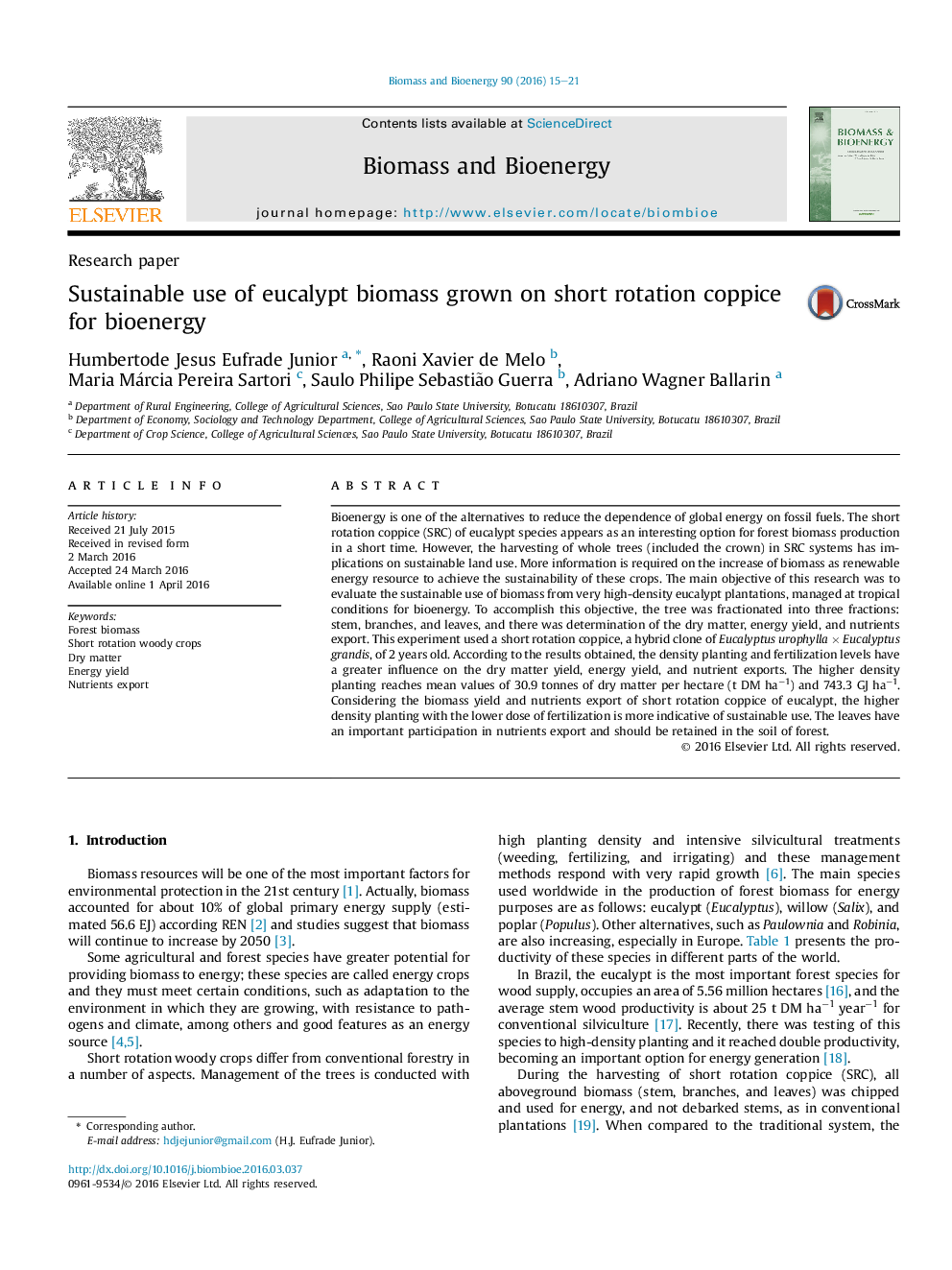| Article ID | Journal | Published Year | Pages | File Type |
|---|---|---|---|---|
| 676687 | Biomass and Bioenergy | 2016 | 7 Pages |
•Potential of short rotation coppice of eucalypt to bioenergy.•Dry matter, energy yield and nutrients export of stem, branches and leaves were studied.•The higher density planting with the lower dose of fertilization is more indicative of sustainable use.•A new and more sustainable way of dealing with energy forest biomass.
Bioenergy is one of the alternatives to reduce the dependence of global energy on fossil fuels. The short rotation coppice (SRC) of eucalypt species appears as an interesting option for forest biomass production in a short time. However, the harvesting of whole trees (included the crown) in SRC systems has implications on sustainable land use. More information is required on the increase of biomass as renewable energy resource to achieve the sustainability of these crops. The main objective of this research was to evaluate the sustainable use of biomass from very high-density eucalypt plantations, managed at tropical conditions for bioenergy. To accomplish this objective, the tree was fractionated into three fractions: stem, branches, and leaves, and there was determination of the dry matter, energy yield, and nutrients export. This experiment used a short rotation coppice, a hybrid clone of Eucalyptus urophylla × Eucalyptus grandis, of 2 years old. According to the results obtained, the density planting and fertilization levels have a greater influence on the dry matter yield, energy yield, and nutrient exports. The higher density planting reaches mean values of 30.9 tonnes of dry matter per hectare (t DM ha−1) and 743.3 GJ ha−1. Considering the biomass yield and nutrients export of short rotation coppice of eucalypt, the higher density planting with the lower dose of fertilization is more indicative of sustainable use. The leaves have an important participation in nutrients export and should be retained in the soil of forest.
